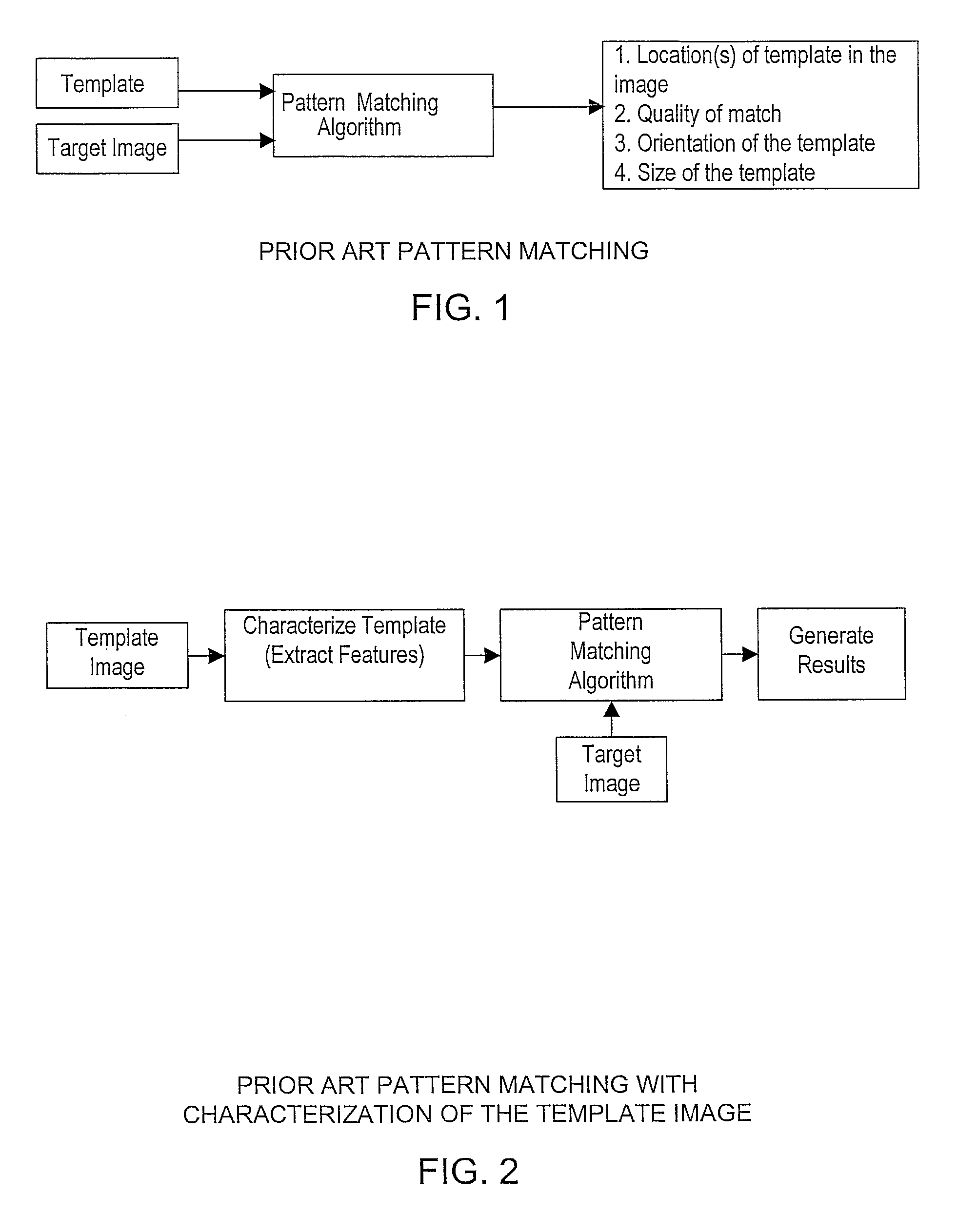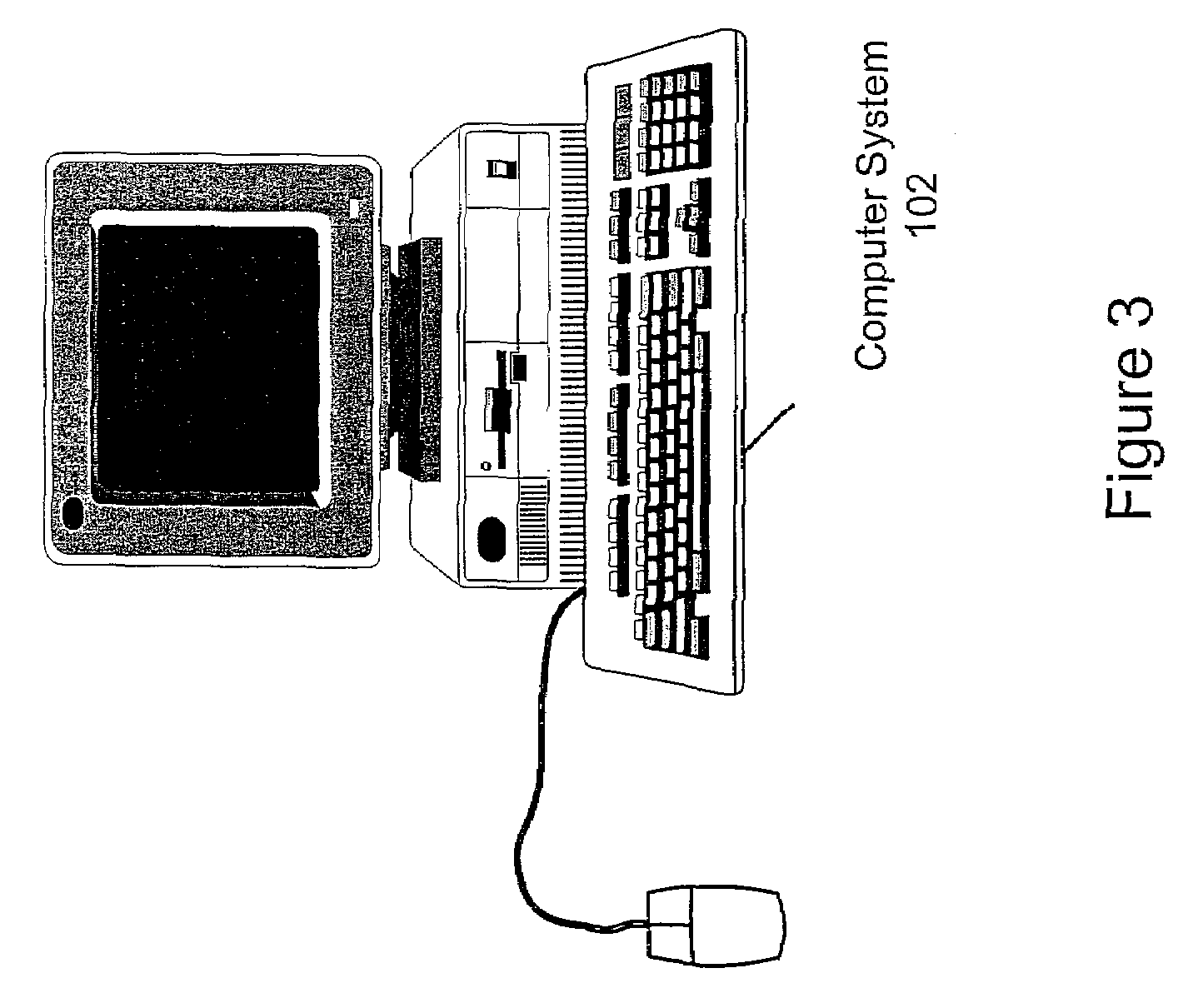Increasing accuracy of discrete curve transform estimates for curve matching in four or more dimensions
a discrete curve and transform technology, applied in the field of geometric pattern matching, can solve the problems of complicating the pattern matching process, analyzing target images, and computational intensive approaches, so as to improve the accuracy of geometric pattern matching, improve the accuracy of curve matching of two curves, and increase the effective dimensionality of curves
- Summary
- Abstract
- Description
- Claims
- Application Information
AI Technical Summary
Benefits of technology
Problems solved by technology
Method used
Image
Examples
example application
Wafer Manufacturing and Quality Control
[0319]In an automated manufacturing facility where semiconductor wafers are produced, consider an image of a wafer (circle on background) where there are notches on the perimeter of the wafer. The notches may be encoded or represented by gray-scales, e.g., the notches are darker or brighter than the background. Classical geometric pattern matching approaches (for slightly rotated curves) are not adequate because a circle is radially symmetric, and so rotations of the (black and white) 2D image are all degenerate. However, using the above approach, the gray-scale information may be included as a third dimension, in which case the image may be rotated to attempt to align the notches, and so facilitate pattern matching, e.g., for quality control.
[0320]It should be noted that this approach is also applicable in higher dimensions, where, for example, other additional image data may be included as corresponding other dimensions to be added to curves ...
PUM
 Login to View More
Login to View More Abstract
Description
Claims
Application Information
 Login to View More
Login to View More - R&D
- Intellectual Property
- Life Sciences
- Materials
- Tech Scout
- Unparalleled Data Quality
- Higher Quality Content
- 60% Fewer Hallucinations
Browse by: Latest US Patents, China's latest patents, Technical Efficacy Thesaurus, Application Domain, Technology Topic, Popular Technical Reports.
© 2025 PatSnap. All rights reserved.Legal|Privacy policy|Modern Slavery Act Transparency Statement|Sitemap|About US| Contact US: help@patsnap.com



